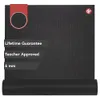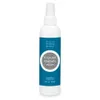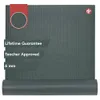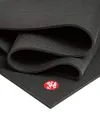Forget sit-ups — you only need 10 minutes and 3 moves to build a stronger core and boost your posture
No weights required

Sit-ups are a great way to work your midsection, strengthen your abs and develop your core, but they're also not that exciting. If you're after a way to liven up your core workouts, try this trainer's three-move abs workout instead.
You don't need any equipment to get started, so it's an ideal option if you're on the go, at a busy gym, or want to squeeze in a mid-section session when you have 10 minutes to spare. But it can make things more comfortable on the floor to roll out one of the best yoga mats.
But if you don't have one to hand, you can still take on this short abs routine developed by trainer Todd McCullough. There are just three rounds of three moves, and while they're all on the floor, none of them are sit-ups, as each is a slight variation on a crunch instead.
The aim is to do each move for 45 seconds, take a 15-second break, then start the next exercise. The most important thing is to do them with control and proper form, rather than rush each repetition to do as many as you can in the time.
This will help you get the most from your training, avoid injury, and hone in on the core muscles you're targeting. If you're unsure on the technique, you can watch McCullough's demonstrations before hitting the mat and trying the session yourself.
Watch Todd McCullough's 10-minute abs workout
It's an effective and varied routine, with less common moves like swans, single-leg points, and oblique falls, that are designed to target your whole mid-section, rather than just your abdominal muscles, and while people use the terms interchangeably, there are a few differences.
Your core, a section of mid-body muscle that connects your upper and lower body and is responsible for your balance, stability, and posture, incorporates a variety of muscles, including the rectus abdominuus six-pack abs muscle.
Get instant access to breaking news, the hottest reviews, great deals and helpful tips.
So, when you're training your abs, you are strengthening your core, but only part of it. That's also why it's important to keep your core workout varied and sometimes give sit-ups a miss in favor of more comprehensive moves or exercises that work alternative core muscles.
But McCullough's routine manages to do all of this in 10 minutes thanks to the way you exercise, a technique known as high-intensity resistance training (HIRT). This is similar to high-intensity interval training (HIIT) workouts but with a focus on muscle-building moves instead of cardio exercise.
However, HIRT and HIIT use a similar technique to get results. You train intensely for short periods (often around 30-45 seconds) with minimal rest. This works your muscles hard, but also raises your heart rate, so you burn more energy than during a steady-paced workout.
Sustaining this high heart rate has longer term effects too, helping boost your metabolism, the amount of energy you burn throughout the day. So while you won't see the effects from a single 10-minute session, it's a useful technique, especially if you're tight on time.
And if you're already doing an extended session, you can add this short workout to the end as a core-focused finisher to build on your routine. But it's also important to give your body time to recover, with of high-quality sleep and a balanced diet with plenty of protein.
What's the problem with sit-ups?
Sit-ups are a staple exercise; they're effective and easy to do whenever you have a spare moment as you don't need any equipment to get started, just a bit of floor space. But not everyone enjoys this classic move.
As we touched on earlier, they're good at working your abs, but don't target your whole core, so if you're after a way to strengthen your midsection more comprehensively, it makes sense to vary your workouts.
But others find that endless repetitions of sit-ups start to cause lower back pain. This is partly because of the way you need to raise your torso up towards your knees, which can cause compression in your spine and create discomfort or pain.
And many of us are trained to try and race through reps as quickly as possible, which makes it harder to keep your core engaged throughout, causing your back to arch and compound the pressure on your lower back.
That's why many people look for an alternative to sit-ups, but as with most things, the key is moderation — and keeping focus on your form. With good technique, working from your core, sit-ups can form an effective part of any core workout.
More from Tom's Guide
- The best core workouts to build stronger abs and boost your balance without weights
- Best Pilates exercises for strengthening your core
- The best ab workouts you can do for free, from anywhere

James is Tom's Guide's Buying Guide Editor, overseeing the site's buying advice. He was previously Fitness Editor, covering strength training workouts, cardio exercise, and accessible ways to improve your health and wellbeing.
His first job at as a sales assistant in a department store, and this is where James learned how important it is to help people make purchasing decisions that are right for their needs, whether that's a fountain pen to give as a gift or a new fridge for their kitchen.
James is an advocate for sustainability and reparability, and focuses his reviews and advice through that lens to offer objective insights as to whether a specific product or service will be right for your needs.











